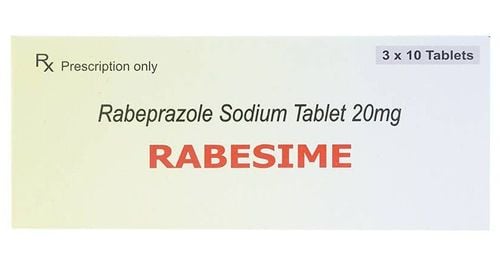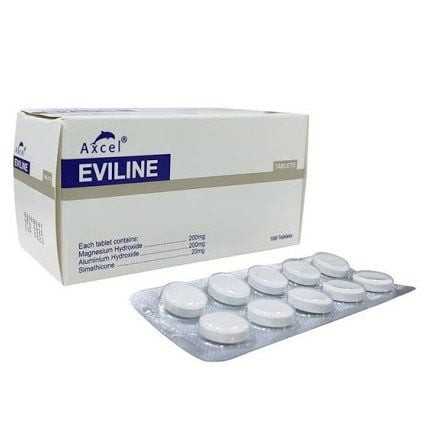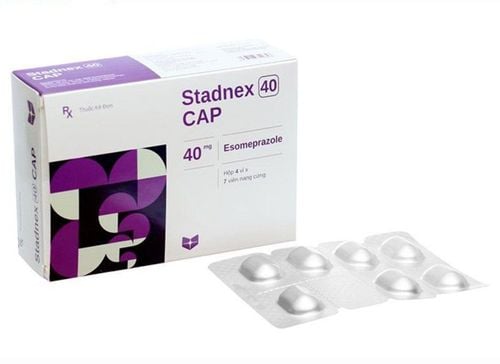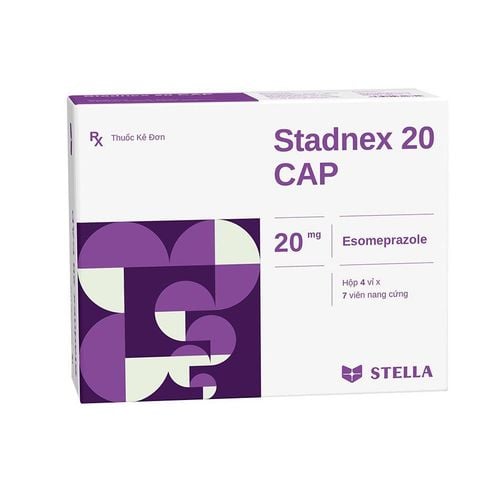This is an automatically translated article.
Enorgapan belongs to the group of gastrointestinal drugs with the main ingredient being Pantoprazol (in the form of Pantoprazol sodium) 40mg. The following are the uses, doses and precautions when using Enorgapan.1. What is Enorgapan?
Enorgapan medicine contains Pantoprazol (in the form of Pantoprazol sodium) 40mg, is made in the form of enteric coated tablets. Enorgapan is indicated for use in the following cases:
Treatment of gastroesophageal reflux disease (GERD); Treatment of gastrointestinal ulcers; Effective in preventing ulcers caused by non-steroidal anti-inflammatory drugs; Effective for pathological hypersecretory conditions (Zollinger-Ellison syndrome). Do not use the drug with any case of hypersensitivity to pantoprazole or to any of the ingredients or other benzimidazole derivatives such as esomeprazole, lansoprazole, omeprazole, rabeprazole.
2. Dosage and how to use Enorgapan
Take once a day in the morning, swallow whole, do not crush or chew.
For the treatment of gastroesophageal reflux syndrome (GERD):
The usual dose: 20-40mg x 1 time / day for 4 weeks, or can last up to 8 weeks; Maintenance dose: 20-40mg per day; Dosage for relapse: 20mg/day. For the treatment of peptic ulcers:
The usual dose is indicated: 40mg x 1 time / day. Duration of treatment is from 2-4 weeks for duodenal ulcer or 4-8 weeks for benign gastric ulcer; Helicobacter pylori eradication: Use a 1-week triple combination therapy regimen with Pantoprazol 40 mg x 2 times/day in combination with clarithromycin 500 mg x 2 times/day and amoxicillin 1 g x 2 times/day or metronidazol 400 mg x 2 times/day. / day. For the prevention of ulcers caused by non-steroidal anti-inflammatory drugs: Use Enorgapan 20mg/day.
For Zollinger - Ellison syndrome: The starting dose is 80mg/day, up to 240mg/day can be used. In case of using more than 80mg/day, it should be divided into 2 times.
For patients with liver failure: The maximum dose is 20mg/day or 40mg/day for alternate days.
For patients with renal failure: The maximum dose is 40mg/day.
3. Enorgapan side effects
During the course of taking the drug, the patient may encounter some unwanted side effects such as:
Common: Fatigue, headache, skin rash, urticaria, muscle pain, joint pain; Uncommon: Asthenia, dizziness, vertigo, pruritus, increased liver enzymes; Rare: Sweating, peripheral edema, malaise, anaphylaxis, maculopapular rash, acne, alopecia, exfoliative dermatitis, angioedema, erythema multiforme, stomatitis, belching, confusion gastrointestinal disturbances, insomnia, somnolence, agitation or inhibition, tinnitus, tremor, confusion, hallucinations, paresthesias;
4. Be careful when using Enorgapan
It is recommended to use the injectable form when oral administration is not appropriate; Before treatment with Pantoprazole, the possibility of malignant gastric ulcer or malignant esophagitis must be excluded, as this may temporarily obscure the symptoms of ulcerative disease, thereby delaying the diagnosis; There is currently no experience with the treatment of pantoprazole in children; The effect of the drug when used to drive or operate machinery is not known; Drugs used during pregnancy can cause adverse effects such as miscarriage, teratogenicity, fetal malformation... to any stage of pregnancy development, especially the first trimester. Therefore, it is best not to use the drug for pregnant women. In cases where it is necessary to use it, it is necessary to consult carefully with a doctor or pharmacist before making a decision; The drug can be passed to a baby through breastfeeding. It is best not to or limit the use of the drug during breast-feeding. Many drugs have not yet fully determined the effects of the drug during this period, so mothers need to carefully read the instructions for use and consult with doctors and pharmacists before deciding to use the drug.
5. Enorgapan drug interactions
Drugs with gastric pH-dependent absorption: Theoretically, the possibility of pharmacokinetic interactions when pantoprazole is co-administered with drugs with gastric pH-dependent absorption such as ampicillin ester, iron salts, ketoconazole may increase or decrease the absorption of the drug when the pH of the stomach is increased; Drugs Acting on the Liver Enzyme System: Pantoprazole is extensively metabolised in the liver, primarily by cytochrome P-450 (CYP) isoenzyme 2C19, to a lesser extent by isoenzymes CYP3A4, CYP2D6 and CYP2C9. However, clinical trials revealed no clinically important interactions between pantoprazole and other drugs metabolised via the same isoenzyme; Warfarin: There is a potential for an increase in INR and prothrombin time when warfarin is co-administered with proton pump inhibitors, including pantoprazole. Risk of abnormal bleeding and death; it is necessary to monitor for an increase in INR and prothrombin time when pantoprazole is co-administered with warfarin; Sucralfate: May delay absorption and reduce bioavailability of proton pump inhibitors such as lansoprazole, omeprazole should take proton pump inhibitors at least 30 minutes before taking sucralfate.













